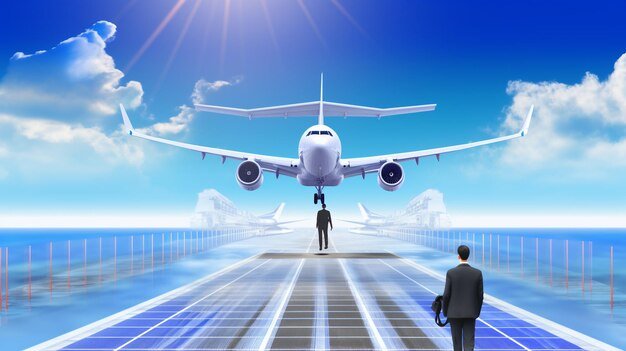Autopilot technology plays a crucial role in modern aviation, helping pilots manage flights more efficiently and safely. While autopilot systems cannot fully replace pilots, they significantly reduce the workload, allowing flight crews to focus on other critical tasks, such as navigation, communication, and monitoring systems. Here’s a closer look at how pilots use autopilot and why it’s an essential tool in aviation.

What is Autopilot?
An autopilot is an automated system designed to control an aircraft’s flight, typically involving basic functions like maintaining altitude, heading, speed, and course. These systems are not fully autonomous but assist pilots by automating repetitive tasks, especially during long flights.
There are different levels of autopilot, ranging from simple systems that only control basic flight functions to advanced systems that can manage nearly every aspect of the flight, including takeoff and landing (in some cases).
How Pilots Engage Autopilot
Pilots usually engage autopilot during the cruise phase of the flight once the aircraft is airborne and stable. Here’s a breakdown of the process:
- Takeoff and Initial Climb: While autopilot can be set up during the climb, pilots usually manually control the aircraft during the initial climb phase. This phase requires more careful attention to engine performance, pitch, and speed.
- Cruise Phase: Autopilot is primarily used during the cruise phase of flight. Once the aircraft reaches cruising altitude, pilots activate the autopilot system, which then takes over the task of maintaining a steady altitude, course, and speed. Pilots can adjust these parameters as needed but the system does the “flying.”
- Approach and Landing: Autopilot can also assist during descent and approach, particularly in complex or low-visibility conditions. Advanced autopilot systems are capable of following instrument approaches (ILS – Instrument Landing System), but pilots still monitor and intervene when necessary. Full landings using autopilot are more common in commercial aviation, especially in low visibility or adverse weather.
Key Functions of Autopilot
Autopilot systems perform several important functions during a flight, including:
- Altitude Hold: Autopilot maintains a set altitude, automatically adjusting the aircraft’s pitch to keep it level.
- Heading Control: Autopilot can steer the aircraft along a specified heading, either based on magnetic heading or using GPS coordinates.
- Speed Control: Many autopilot systems can adjust throttle settings to maintain a constant airspeed.
- Vertical Speed Control: The system can climb or descend at a preset rate, adjusting the pitch to meet the target vertical speed.
- Navigation: Modern autopilots are integrated with flight management systems (FMS) and GPS, allowing them to follow complex flight paths, including waypoints, airways, and departure/arrival procedures.
Types of Autopilot Systems
There are different types of autopilot systems, each with varying levels of automation:
- Single-Axis Autopilot: The simplest form, controlling just one axis, typically roll (wing leveler). This type is generally used in smaller aircraft.
- Two-Axis Autopilot: Controls both roll and pitch, helping to maintain level flight. This is common in many general aviation aircraft.
- Three-Axis Autopilot: Controls roll, pitch, and yaw (rudder), offering more advanced functionality, including turning and maintaining straight flight. Most commercial airliners use three-axis autopilot systems.
Benefits of Autopilot Technology
Autopilot systems provide several key benefits to pilots and aviation operations:
- Reduced Pilot Workload: Autopilot allows pilots to offload repetitive tasks, reducing their physical and mental workload. This is particularly important during long flights, as it helps pilots stay alert and focused on other important duties.
- Improved Safety: By automating certain flight functions, autopilot helps minimize the risk of human error. Pilots can monitor the flight more closely and intervene if necessary, especially in complex or stressful situations.
Conclusion
Autopilot technology has revolutionized aviation by making flights safer, more efficient, and less stressful for pilots. While autopilot systems can manage many aspects of flight, they work best when integrated with a skilled flight crew that can monitor, adjust, and intervene as needed. Understanding how autopilot works and its limitations helps pilots ensure that the system complements their expertise and judgment. As technology continues to evolve, the autopilot will likely become even more advanced, but the role of the pilot will remain crucial in maintaining flight safety.









